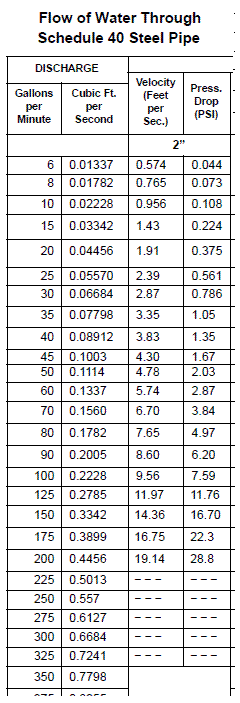ptonsparky
Tom
- Occupation
- EC - retired
Customer has a booster pump at the end of a 2" copper water line. Operational pressure at the input side of this pipe is 95 psi. Pump is rated at 145GPM @ 35 psi. Spray nozzles will use 34 GPM @ 40 psi.
What I need to know is how many gpm will thiis 2" pipe allow to flow.
They want to use a pressure switch on the input of this pump to turn it on. We have that done. but I believe the pump is starved for input water becase we do not get a significant pressure increase. My job is to fix it.
What I need to know is how many gpm will thiis 2" pipe allow to flow.
They want to use a pressure switch on the input of this pump to turn it on. We have that done. but I believe the pump is starved for input water becase we do not get a significant pressure increase. My job is to fix it.


